A couple of years ago, I tried a unique herbal “tea” from Latvia. 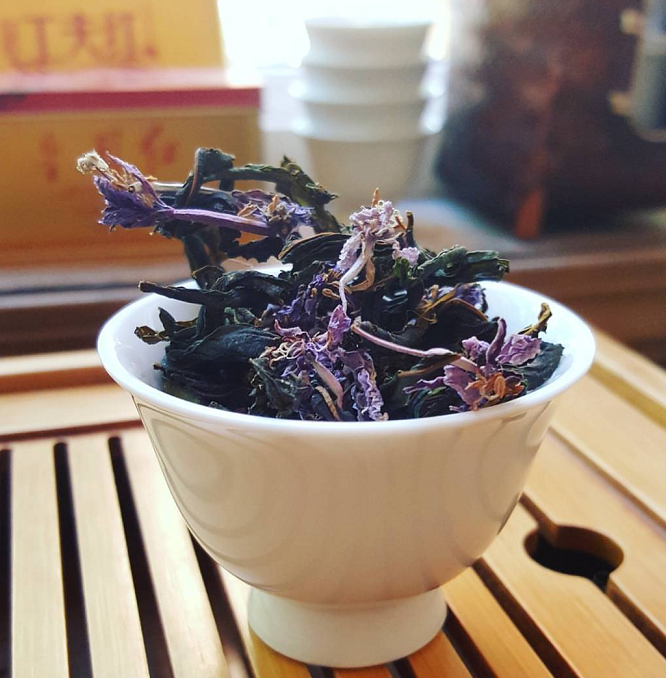
It was called “Rosebay Willowherb”. The sample was sent to me by a now-defunct company, and what intrigued me most was the processing method. While the purple flowers of the plant were dried in the typical tisane manner, the leaves were almost fully oxidized—like a black tea.
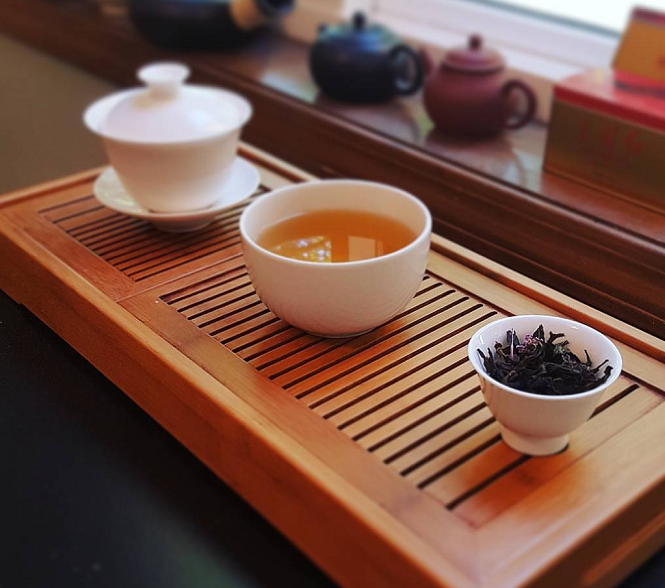
I remember enjoying it quite a bit, much in the same way I’d enjoyed other Eastern European herbs that’d undergone oxidation. The brew was full-bodied, and the flavor reminded me of hibiscus . . . if it had been made into a wine. Floral, sharp, and strangely fruity. After trying it, though, I didn’t look into it further. While oxidized herbals weren’t common, they weren’t exactly novel, either. How much history could this one have?
Turns out . . . a lot.
Fast-forward to the summer of 2019, at the Portland tea festival (Tea Fest PDX). In my wanderings from vendor booth to vendor booth, I encountered one I visited every time I could—Astoria Tea Company. They were the “tea arm” of the coffee roasting outfit, aptly named, Astoria Coffee Roasters. I always paid attention to them because of their penchant for bringing the weird stuff.
I love the weird stuff.
That year was no different, and they had along with them something called “Ivan Chai“. The name slightly rang a bell, but I wasn’t sure why. It wasn’t until I took my first sip that it came back to me. Rosebay Willowherb! Except the one they carried hailed from Russia, not Latvia, and this contained no flowers; just oxidized leaves. I almost picked up the loose leaf bag, but then I saw . . . this . . .
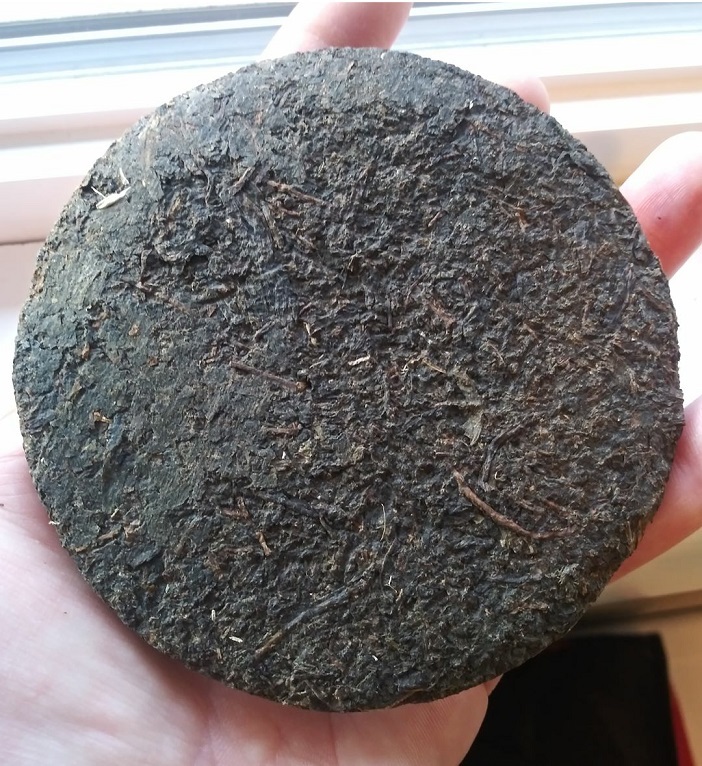
Oxidized Ivan Chai leaves crushed to fannings grade, and compressed into the likeness of a puerh cake. They even called it “Ivan Chai Puerh”. I bought it, of course. I had to. It was the weirdest of the weird.
And over the course of six months, I chiseled away at that strangle li’l cake.
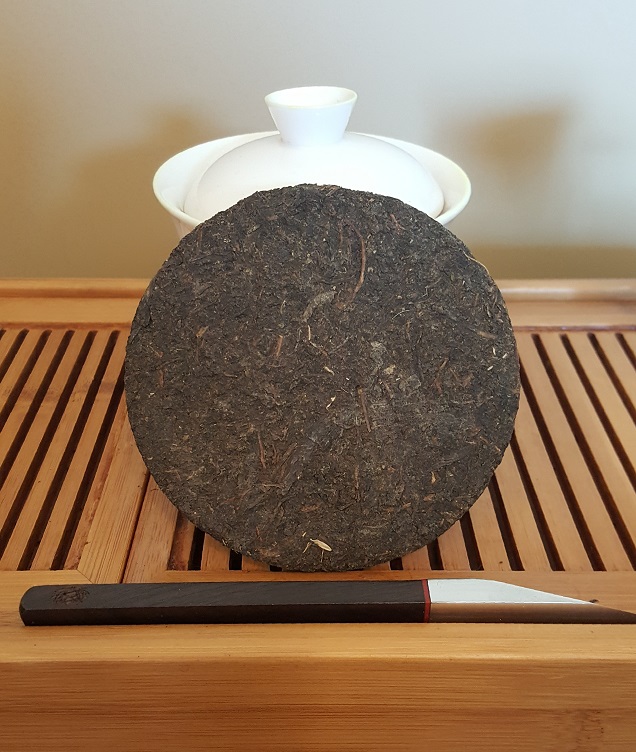
Due to the iron pressing, it was exceptionally difficult to break into. Even my “Bing Slayer” puerh knife had some difficulty prying chunks off of it. Eventually, I figured out a method that worked—scraping off slivers like I was sharpening a sword on a stone. I usually chiseled off enough to get one gong fu session going.
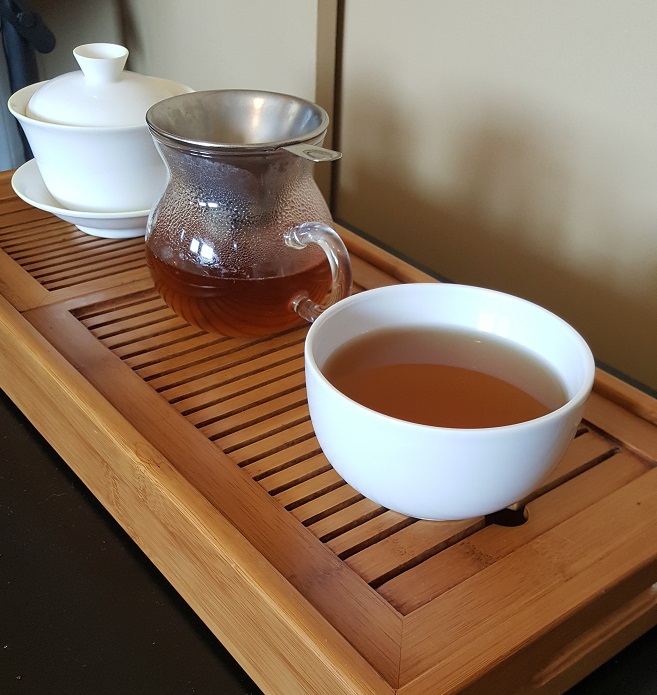
Well worth the effort, too. The liquor brewed dark, and—unlike the Latvian version—the taste was softer, more rounded in its stone fruit notes. For some reason it reminded me of a Dan Cong black tea by way of a heicha . . . if it was bug bitten. Sweet, slightly, sharp, herbaceous, but also alternating between puerh-like mossiness and earthiness. Narrowing down exact taster notes was a chore.
Unlike other teas in my retinue, it didn’t last long. By late autumn, I was down to a tiny wedge. That reminded me, I needed to learn more about this weird herb from Russia. The insert Astoria Tea Company included with the cake mentioned that it was the traditional Russian tea, hearkening as far back as the 12th century.
Not only that, it was the “tea” of Europe before the advent of Camellia sinensis. Of course, that made me scoff a bit. So, I did a bit more digging. Other blogs and vendor sites corroborated this. Ivan Chai was the chosen drink, according to them. Another lofty claim? Apparently, the Russians were the first to oxidize herbs for drinking before the Chinese. Well, that just made my eyes roll.
Then I thought about it for a second. Wuyi Mountain in Fujian province, China first developed Zhen Shan Xiao Zhong (modern day Lapsang Souchong) black tea around that time. How they developed it and why is still a matter of folkloric debate. The timeline, however, did coincide. Whether or not the Chinese or the Russians were first, an exchange of technique may have occurred, given their close proximity.
But what exactly is Ivan Chai, and how did it get that name? Well . . . strap in, this is a doozy.
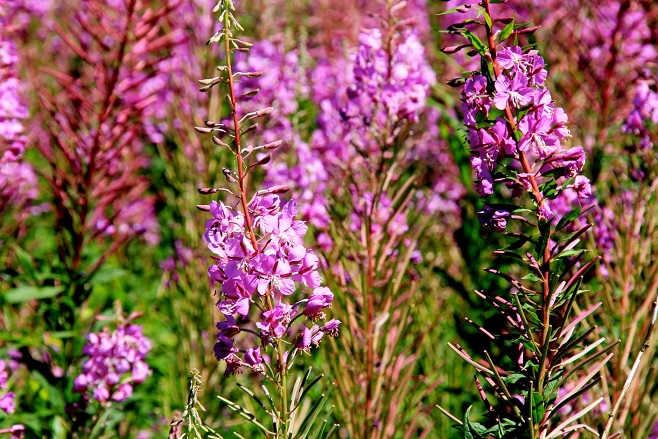
The main plant associated with making Ivan Chai is Chamaenerion angustifolium. It is known by a few other names. In the U.S., it’s known as fireweed; in the U.K., rosebay willowherb. For the longest time, it was thought to be a part of the genus Epilobium, but later morphological research pegged it as a member of the Chamaenerion genus. To make matters more confusing, there are fourteen (or so) related species in the genus that are also used to make Ivan Chai. Not to mention, those species are scattered all over the world.
Here’s a pic snapped by a Colorado friend of one such species.

Members of the genus Chamaenerion are often referred to in science-y circles as “colonizers”. Meaning, they bloom in and around patches of land affected by forest fires or other facets of environmental distress. Case in point: in some additional reading, I learned a bit about what the blooming weed meant to Russians. In the book, In Putin’s Footsteps: Searching for the Soul of an Empire (by Nina Kruscheva and Jeffrey Tayler), the authors recounted this about Ivan Chai:
“According to [Yevgeny Radchenko], Ivan–chai, or fireweeds (purplepetaled long-stemmed wildflowers that bloom during the region’s brief summers) commemorate Stalin’s victims, popping up in fields after fires have struck or bombs have fallen—in the wake of tragedy, in other words.”
The plant definitely earned its “fireweed” moniker.
Historically, the village associated with the cultivation and production of Ivan Chai is Koporye in Leningrad Oblast. In fact, for awhile, the titular drink often went by the names Russian Chai or Koporye Chai. Chai—of course—meaning “tea”; although, in Russian, it’s “чай” (transliterated as “chay”). The name Ivan Chai was probably coined by European traders of the drink. Why? Who knows? Maybe because Ivan was such a common Russian name.
Until the late-19th century, Russians and adjacent Europeans (presumably) imbibed Ivan Chai by the tankards. However, then another conspicuous herb rose to prominence. Yep, good ol’ Camellia sinensis. Russians took a particular liking to black teas from Sri Lanka.
By the 1910s, mass production of the herbal infusion all but ceased, save for the traditional regions it hailed from. Interest wouldn’t spike again until around World War II. One of my favorite anecdotes from that time concerned Hitler. Supposedly, the Red Army developed a scientific factory in Koporye for mass producing Ivan Chai elixirs for the troops. Hitler caught wind of this and ordered the destruction of the facility.
That’s right, Hilter was worried the Russians were developing an herbal supersoldier serum.

Alas, the Germans succeeded in razing the town and destroying any factories associated with the project.
Now, can I verify any of this? . . . No
Most of the publications available online are conjectural at best, horrendously biased at worst. To find anything more substantive, I’d have to (A) learn Russian, and (B) peruse the Russian Internet.

I’m not going to the Russian Internet.
What also drove me nuts about some of the vendor sites touting the beverage’s historical significance . . . was their emphasis on the health benefits. Many sites claimed the drink could cure everything from cancer to anxiety. After sifting through dozens of such sites, I felt like a dude named Ivan—clad in a tracksuit— was hocking snake oil to me.
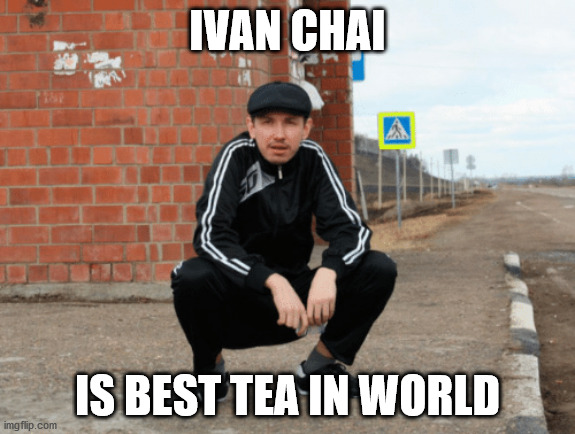
However, all that digging did make me thirst for more. I finished my dubious “puerh” cake of the stuff; time to buy the loose leaf version. And so I did, from the same place I got the cake, even. A lot of it.
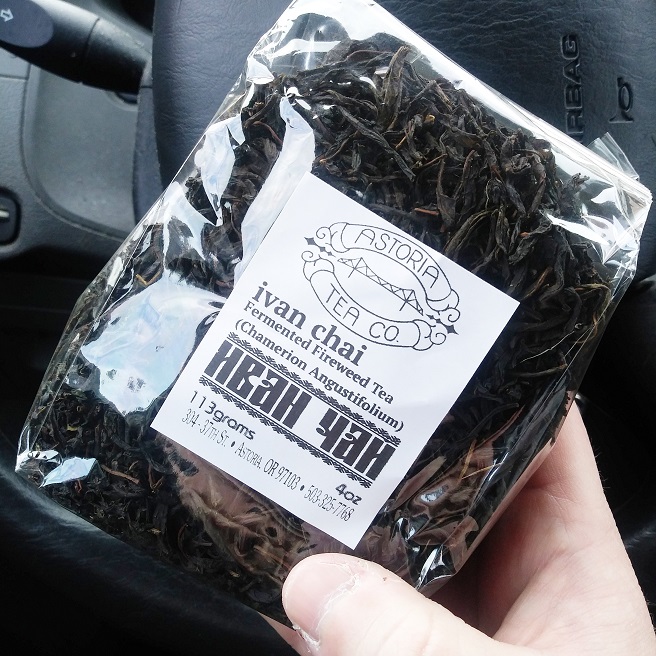
For all intents and purpose, it looked like a black tea. If I showed this off at a tea gathering, they’d probably ask me what part of China it hailed from. The only thing that gave it away as an herbal was the smell. The fragrant leaves smelled of honey, stone fruit, and earth.
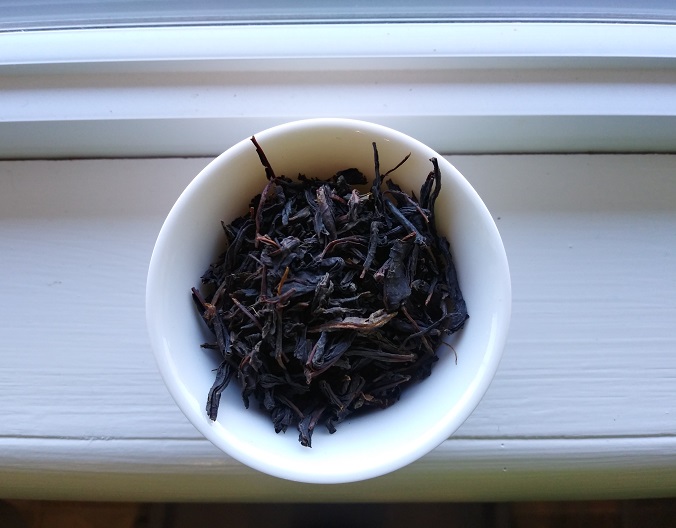
At the start of 2020, I came to the realization that—for the sake of my anxious brain—I had to cut back on caffeine. This meant nixing my afternoon cuppa, which I usually sipped at work on my evening lunch break. Switching to Ivan Chai quelled that hankering. Earthy-sweet like a Dian Hong, plummy like a five-year-aged oolong, tart like hibiscus, sharp like a Dan Cong black, and smooth like mulled wine.
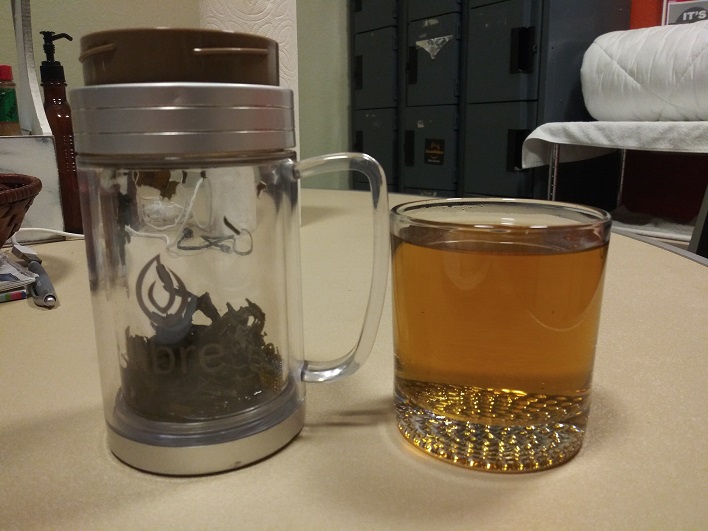
On my days off, I even gongfooled around with the leaves a little. It held up to successive steeps pretty well!
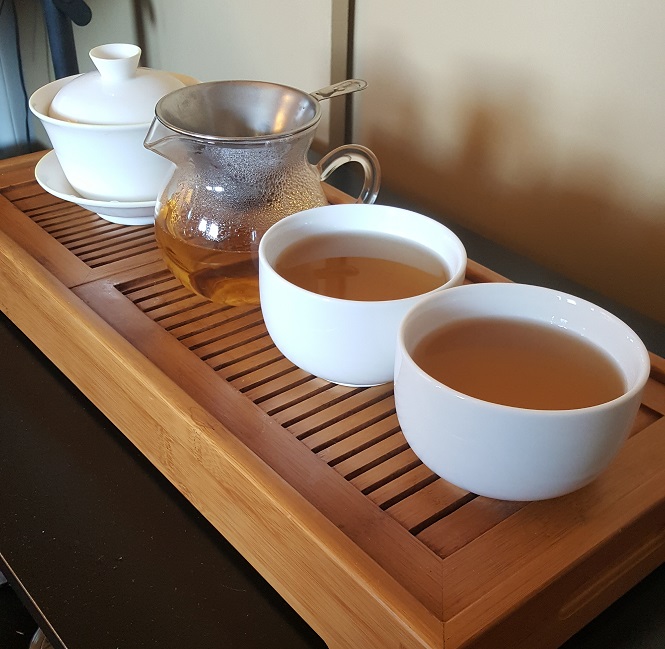
At the time of this writing, there’s still so much more I don’t know about this weird, wonderful herb. Like, apparently, there’s a whole subculture on YouTube devoted to DIY-ing the tea at home. Like this guy:
He looks like he’s having the time of his life.
The veritable ease of oxidizing the plant makes prepping it yourself super-easy. That and there are many different ways to roll and shape the leaves. I even just learned a dried white tea-ish version exists. As budget allows, I’ll try to notch off as many of these versions as I can.
Will I completely replace real tea with this? Whoah, hey now, let’s not get carried away. I love the stuff, but my heart is still devoted to Princess Camellia of Sinensis. Yet it’s nice to know something like this exists when needed, and that it has a long and storied history to boot.
In the meantime, I’m okay with sticking to the basics.
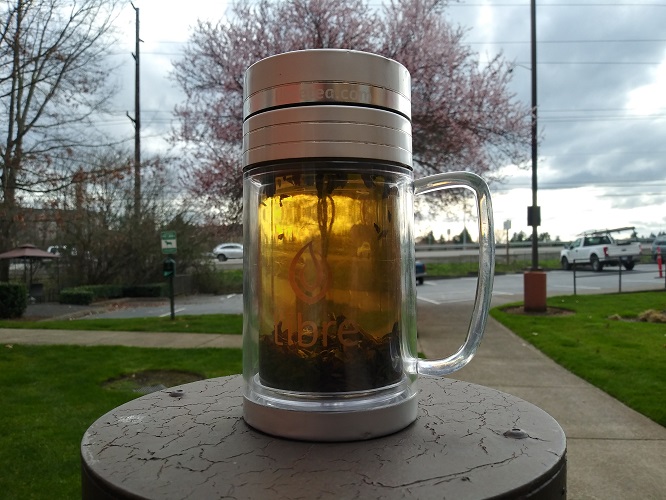
Mug full o’ dark leaves.
To buy Ivan Chai where I got it—from the Astoria Tea Company—go HERE.
Leave a Reply